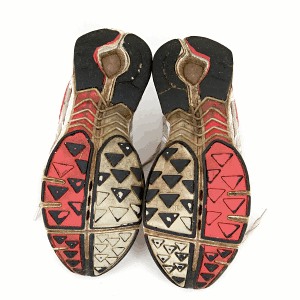When should I replace my running shoes? Finding the right running shoe is an iterative process and there is no one perfect running shoe suitable for everyone. The perfect fit has to do with the shape of your foot, your running style, and the terrain you run on. In fact, there are runners who don’t seem to need shoes at all. Many endurance sports injuries are purportedly caused by using worn-out shoes, and there are many factors which help a runner determine whether it is time for a change of shoes.

One important factor is mileage – one school of thought is to replace running shoes every 250 miles, where others recommend changing shoes after running 300-500 miles. So how should a runner gauge his mileage? This is where your training log comes in. Documenting your effort is the best gauge on getting a true sense of what is right for you.
Time is another factor – a generally accepted duration is 6 months. This has been calculated by assuming a regular weekly schedule of 3 to 5 mile runs / 4 days a week. A runner who follows that schedule would change shoes around the 300-500 mileage mark. Logically, a runner who runs more miles would find it necessary to replace his/her shoe earlier than the general 6-month rule.
Other important factors include weight and running style. Clydesdale/Athena runners (like myself) might find themselves changing shoes more often as carrying extra weight can break down shoes faster. Lightweight runners who are heavy-footed or use unique running techniques will also burn through shoes quicker.
How can you tell if your shoes are showing signs of wear? Place your shoes at the eyesight level and look at the back of your shoes. If the soles look worn out and appear uneven, there could be some damage to the midsole. The midsole is one of the more important parts of the shoe. However, finding a defect is not easy. If you feel tightness, fatigue, aches, and pains while running, then it can be an indication of midsole damage. Try twisting your shoe, if it twists easily then it might have a damaged insole. Similarly, you can check the other parts of the shoe — wear can affect the cushioning, back heel, arch point or the toe box of the shoe as well.
Knowing the condition of your shoes is important because neglecting their condition may lead to injury. A tip for longer shoe life, try rotating shoes during a training week. Not only will it reduce mileage on each pair, but it is also a great way to test different brands to determine which shoe is giving you the best performance.
Finding the right running shoe is not an exact science, it depends on the various factors I have mentioned above (plus more). You are the best person to determine what works. Log your training and keep notes about how you feel, plus how your shoes feel, and you will quickly be able to answer the question, “When should I replace my running shoes?” for yourself.
